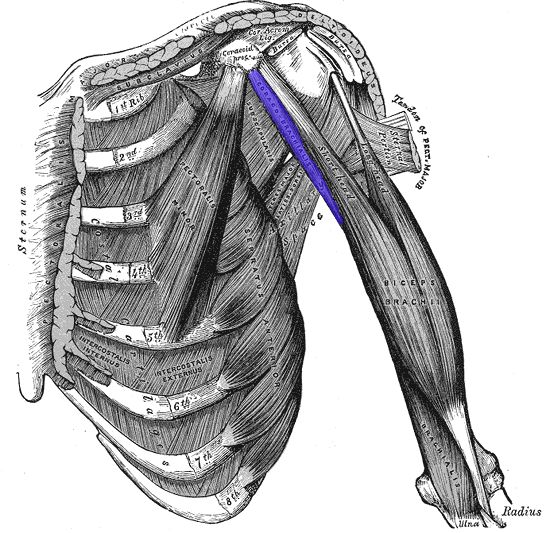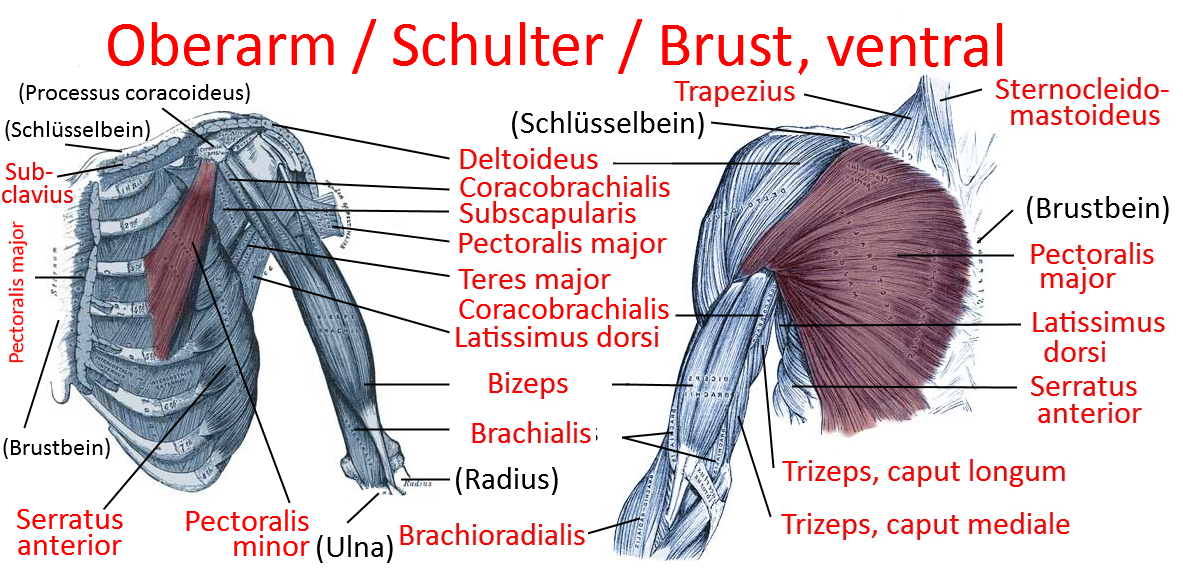yogabook / muscles / coracobrachialis

Linkmap

Coracobrachialis
Scapulohumeral muscle of the shoulder girdle: the frontal abductor originating mostly approximately together with the short head (caput breve) of the arm biceps.
Classically, the coracobrachialis is described as a monoarticular single-headed muscle. According to a more recent study, this is much less uniform: only in just under 50% the muscle originates with a single head as usually described medioposterior to the short head of the biceps, but in 43% it has two heads, which either both originate from the processus coracoideus, or one of them originates from the cranial short head of the biceps. In just under 8% of cases, there were even three heads, two of which arise from the processus coracoideus and the third from the short head of the biceps.
The coracobrachialis supports medial attachment to the humerus when the arm is frontally abducted and supports its endorotation. However, if the arm is retroverted and perhaps also endorotated, it supports the cancellation of the end rotation and therefore has a slightly exorotating effect.
Origin: mostly (see above) coracoid process of the scapula
Attachment: Inner side of the humerus, opposite the deltoid tuberosity
Innervation: Nervus musculocutaneus from fasciculus lateralis of plexus brachialis (C5-C7)
Antagonists: …
Movement: Fixation of the humerus in the hip socket (acetabulum), lateral adduction, frontal abduction, endorotation of the arm
Strengthening postures (232): Postures with powerful frontal abduction such as upface dog, three-point headstand
Stretching postures (231): Postureswith retroversion such as purvottanasana, setu bandha sarvangasana, sarvangasana, uttanasana, prasarita padottanasana with arms behind the back
